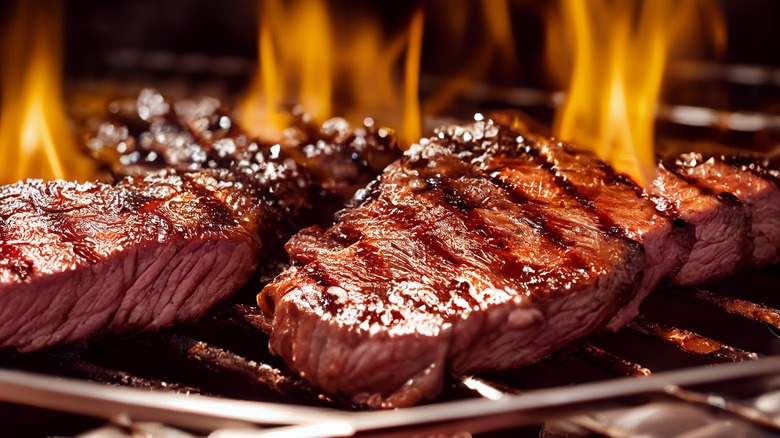America's First Labor Day Barbecues Served 1,000 Pound Oxen
In the United States, summer is unofficially observed between Memorial Day and Labor Day each year. While Memorial Day celebrations recklessly kick off the season with promises of warmer weather, trips to the beach, and for young families, school vacation, Labor Day celebrations are more reserved, like Sunday evenings — you're happy you have time off, but you can't forget what's coming Monday morning; colder temps and back-to-school for the kids.
Labor Day became an official U.S. holiday at the end of the 19th century to pay tribute to American workers and give them a much-deserved and needed day off. With all the festivities planned around the weekend, it's easy to lose sight of why we have the first Monday in September off. But it's comforting to know that Americans celebrated similarly for over 130 years, with meat on the barbecue.
While grills today will likely be covered in hamburgers and hot dogs this Labor Day, the Volunteers Firemen's Association in the Bronx, New York, celebrated the first Labor Day in 1888 by roasting a 1,200-pound ox. Although that may sound odd, even to meat eaters, cattle, oxen, bulls, and cows are all the same animal that's butchered into beef steaks, roasts, and chops, with different names, thanks to the farming industry.
A steak by any other name
Depending on the animal's gender and stage in life, 'cattle' (where we get milk, meat, and leather from) were given different names to differentiate them on the farm. 'Heifers' are female cattle until they birth a calf and become 'cows.' Male cattle are called 'bulls' until they are castrated —then they are called 'oxen.'
Bulls were initially castrated to calm and domesticate them for farm work. Although we no longer need them for plowing fields, the U.S. beef industry still castrates bulls intended for slaughter to produce more flavorful, tender meat but refers to them now as 'steer.' All cattle are considered beef and are butchered the same way into the primal and subprimal cuts carnivores love to grill.
The idea of roasting oxen for Labor Day immediately caught on as more industrial cities celebrated the new holiday with parades followed by town-wide barbecues. In 1890 (over 1,200 miles from the Bronx), Omaha, Nebraska, marked its second Labor Day with thousands of people enjoying a parade and then bellying up to a 1,050-pound roasted ox.
Today's beef is primarily farmed from steer but rarely is the language "ox or oxen" used to sell a steak; however, high-end restaurants sometimes include 'oxtail' on their menus to sound fancy (but now you know what that is). While Americans moved away from open pits that fed the community to smaller backyard grills in the 1950s, we still love grilling steak for Labor Day weekend.


